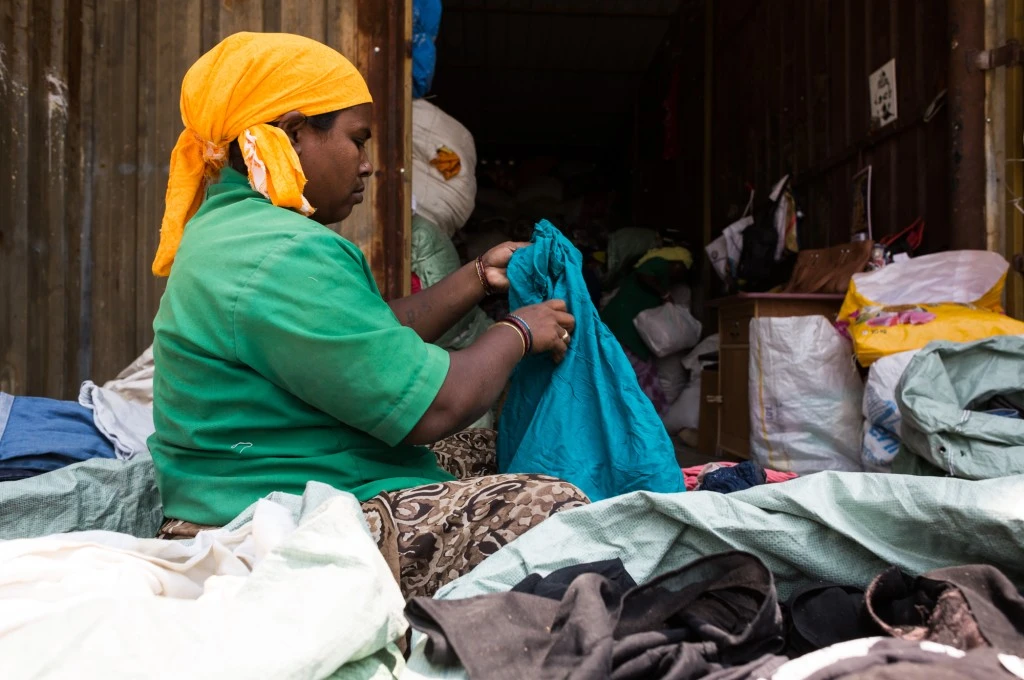The social sector comprises nonprofits, funders, practitioners, and other entities that are trying to solve some of the most complex challenges of our time, including poverty, social justice, climate change, and educational inequality. For a sector that has to address such complicated problems, intergenerational problems at scale and as quickly as possible, experimentation with new ideas and approaches is a necessity.
However, funding cycles and pre-decided programmes often influence what nonprofits can focus on. This has led to a series of ‘copy–paste’ programmes across vastly different geographies, which has also restricted the creation of a truly long-term vision.
As a result, we aren’t seeing enough innovation in how nonprofits are run, especially as they grow in terms of budgets and people.

Why do nonprofits stop innovating after a point?
Most nonprofits are born in response to a gap left by the government in serving its citizens, whether it is undelivered services, overlooked communities, unfulfilled rights, and so on. Therefore, when they start a programme or an initiative, they are innovators by default. The challenge arises once they start becoming entrenched in the way they work, which makes them no different from how businesses operate.
Compounding the lack of continuous innovation are additional factors including the following:
First responders in times of crisis: During disasters such as floods, droughts, earthquakes, or pandemics, the country looks to nonprofits to be first responders. In such scenarios, nonprofits often must balance these immediate emergency responses alongside their regular work that focuses on long-term solutions around education, health, livelihoods, gender, or justice for their communities. Additionally, the nature of many social issues entails that organisations may need to tackle new challenges even as they work to address existing ones.
Lack of sufficient resources: To reimagine systems as vast as education or health, for instance, is no small task. Given the magnitude and complexity of these problems, the sector can prove to be resistant to trying anything new or different, especially if they already have a model that ‘works’. Also, those attempting to innovate might be met with a sea of naysayers discouraging a novel, untested approach that is likely to require additional support, skills, and talent in an already resource-constrained ecosystem.
The ’almost-zero’ availability of means to explore new ideas or even fail has been a primary reason for the lack of experimentation within programmes.

A focus on standardisation and replication: Over the years, the development sector has expanded as an industry, and several allied systems to support nonprofit work—including CSR, government funding, and capacity-building programmes—have been created. Even as these systems have helped make development work easier, they have templatised the sector and forced it to stay within a box, one which has little to no space for innovation experimentation and failure.
This has led to a repetitive implementation of the same solutions year after year, which has led to changes being affected in terms of logistical efficiency or scale alone. Many corporate funders want programmes to be replicated across geographies; there is little or no emphasis or support for changes in programme design or customisation. As a result, nonprofits seldom see projects or programmes as seedlings that must grow. Much of the critical thinking usually stops at defining the problem and does not always continue into revising and redesigning the solutions.
Despite these constraints, however, it is important that we find the most effective solutions to the multifaceted issues that the sector is attempting to solve. For this to happen, nonprofits will need to embrace a culture of experimentation and explore solutions that may not be immediately apparent.

How can nonprofits incorporate innovation in their work?
In 2016, we founded Project DEFY in an attempt to reimagine the education system and develop alternatives to mainstream learning. We saw that most organisations working in education focus almost entirely on schools or the after-school segment. The educators we spoke to also acknowledged that despite decades of work in improving learning outcomes, little has changed owing to traditional schooling practices. And while many of them realise the need for a fresh approach to education, most— fearing the risk of failure—choose to remain within the mainstream school system.
At DEFY, our idea was to look beyond schools entirely. We wanted to create spaces where young people and community members at large could decide what they wanted to learn and how they wanted to do it. In our attempt to do so, we set up community learning centres, which we call ‘Nooks’. These are spaces for self-learning where neither teachers nor examinations are present, and where learners set their own goals and work on projects of their choosing.
Based on the work that we’ve done to date, nonprofits and state governments have approached us to inject innovation into their programmes. Here are some lessons we learned that can help organisations incorporate an innovation lens into their work:
1. Ask questions constantly
We believe that innovations must be continuously questioned. This is easier at the beginning of an organisation’s journey since it is natural for new ideas to face scrutiny. But it is also important for established nonprofits to integrate this into their processes in order to arrive at the best possible solution for the issue they are trying to address. Organisations must embrace the fact that while the solution they’ve devised may be the best one given their vision and the resources available to them, it may not necessarily be perfect.
For instance, when we started out, we wanted to discover the most intelligent solution to the problem, which in our case was finding an alternative to classroom learning. Thus, we ended up creating Nooks. But we thought of the first Nook that we created as the first version of the solution and not the solution. In fact, we still do not see any single thing as the ultimate solution, but as something that needs to be continuously improved on and evolve.
Therefore, in the process of charting the path from the first Nook to the second one, to now, we’ve continuously questioned our ideas, collected feedback from the people we serve, found loopholes, and made space for discussions to ensure we keep innovating to find a better solution.
2. Build the right team
In order to develop innovative solutions, nonprofits must build teams that can question and design. Designing involves a process of problem-solving which starts by questioning or observing. Whether it is a new social problem or an existing one where a solution has already been implemented, organisations must come up with responses tailored to specific problems and needs. Otherwise, they may be confined to looking for ready-made solutions used by others.
The design process must be a continuous part of the organisation’s day-to-day work, where the aim is improving on established solutions or creating fresh ones that cater to newly observed needs. This would entail hiring people who have the ability to identify problems and gaps as well as the courage to approach these.
In our early days at DEFY, rather than hiring for a specific skill set, we chose to hire those who deeply cared about the problem we were trying to solve. We believed that if we hired people who were passionate about solving the problem, they would continuously experiment, iterate, and find different ways to solve the issue at hand.
3. Focus on organisational culture
In order to build a culture of innovation in nonprofits—one that nurtures inquisitiveness and passion—founders and senior management must create space for dialogue that enables all employees to freely share their questions and ideas.
A large part of culture building is in the way decisions are made. At DEFY, there is no hierarchy of the sort where your position—as opposed to the merit of your argument—makes you right. The team is encouraged to reflect on decisions and provide critical feedback. They are also offered opportunities to bring about changes in our routines and interactions and co-create new practices and policies that further our mission as opposed to leaving this to the leadership alone. For example, team members at DEFY collectively designed a policy to identify and learn from setbacks. This also led to the team identifying an urgent need to create and document standard operating procedures (SOPs) within the organisation.
We also follow adhere to the principle of implicit trust, where we trust team members from the outset, rather than requiring them to earn it.
4. Create a core team of innovators
For organisations with large teams, integrating innovation as a practice into their operations might prove to be more challenging. One way to overcome this is by creating a sandbox environment within the organisation. This entails building a small team that is bound by neither the usual DNA of the organisation nor by the rules that the other employees must follow.
This team should preferably include the founder if they are still a part of daily operations, and up to six other employees, some of whom need to be well versed in building on ideas from scratch. The only mandate for this team would be to observe, respond to ideas and solutions, and experiment in the process. They should be separate from the organisational hierarchy and not tied to ongoing projects. They will also need sufficient resources that allow them to test out new ideas within a set budget. Having a budget is important because if the experiment itself is very expensive then it is less likely to translate into a viable solution.
5. Scale strategically
Nonprofits rarely have a dedicated research and development (R&D) team; they usually operate with large programme or project teams, which are involved only in execution. So, even if a nonprofit has substantial annual budgets and a large number of employees, they must analyse what these growing numbers imply. Organisations must question the direction of this growth and check whether they have a significant proportion of people who are ideating, versus everyone executing pre-determined solutions.
For us at DEFY, scaling the concept of Nooks has meant the decentralisation of people, resources, and money, becoming flexible about the execution of our ideas, allowing for changes and contextualisation, and choosing smaller organisations as our partners initially as opposed to large ones.
We have also intentionally kept our core team small. So, while we have 95 people who work on Nooks and other ideas produced by Project DEFY, only 17 directly work within the organisation. This allows us to have a flexible team that can respond to changes in design or create and try out new iterations quickly, while ensuring that our idea continues to evolve with different partners in different contexts.
6. Embrace failure
Failure is not something to move past but to consciously seek. This is not to say that organisations must aim to fail. However, they must not be afraid of trying things that have a high chance of failure because one must take risks to push boundaries.
Technology or science labs, for instance, go through decades of failed experiments before discovering something groundbreaking. During this process, they document their failures through research papers because the scientific community recognizes that even failures can be knowledge tools. On the other hand, the development sector often shies away from talking about failure openly. It is important to learn from failures—one’s own and those of others—and as a sector, we must acknowledge failures as crucial pieces of information that must be shared and discussed.
While these suggestions can help nonprofits to start thinking innovatively, philanthropic support is crucial for them to put this into practice. Funders must support ideas that may seem high-risk, and they must offer core grants instead of project-based ones to enable organisations to build the innovation muscle within their teams. To understand the decision-making process in the organisations they support, they must seek different kinds of reports and not just metrics that capture success. And most importantly, funders must act as partners in change, versus being either passive supporters or demanding clients.
Is this possible for India’s development sector? I believe so. With the birth of a few unrestricted grants and incubation and accelerator programmes for nonprofits, there are positive movements in this direction. But these are small steps, and there is still a long way to go and much bigger risks to take.
—
Know more
- Listen to Project DEFY’s podcast on reimagining modern education.
- Read this article to learn more about design thinking for social innovation.
- Read this article on the challenges of balancing out scalability with innovation.




